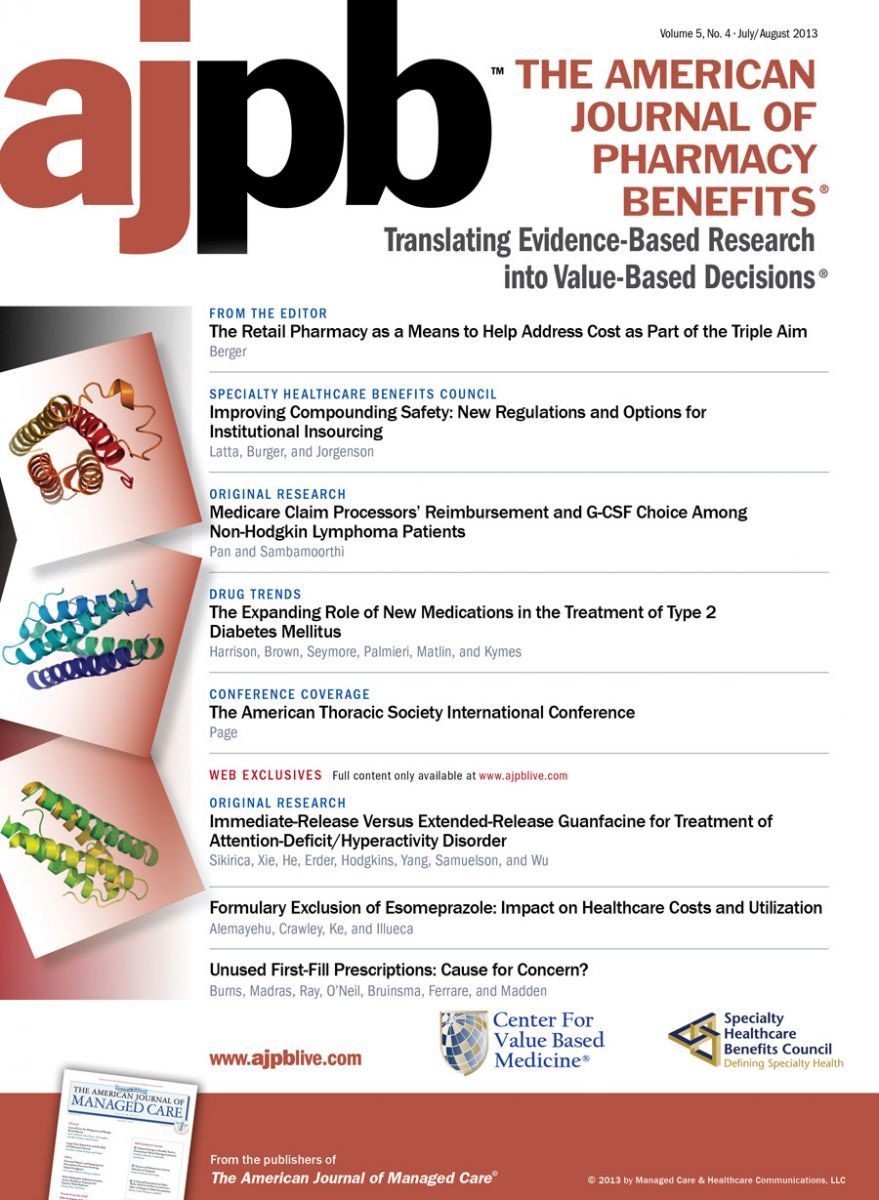Publication
Article
AJPB® Translating Evidence-Based Research Into Value-Based Decisions®
The Retail Pharmacy as a Means to Help Address Cost as Part of the Triple Aim
Author(s):
Physicians should work with retail pharmacies to find cost-effective medication strategies for their patients.
In the last 2 issues of The American Journal of Pharmacy Benefits I have commented on the use of retail pharmacy as a potential asset in achieving the Triple Aim.1 I would like to take a few minutes now and comment on the third portion of the Triple Aim—cost. Like the other 2 areas (access and quality), cost is not a finite measure. Cost is making sure that we are receiving value for the money we are spending on health and healthcare. One would think that the cost issue is an easy one to tackle. This is not the case, however. I see a number of areas where retail pharmacies can help to temper our ever increasing healthcare costs and I am going to concentrate on 2 of these areas here. The fi rst is the cost that healthcare consumers pay for their medications and the second is the use of the retail pharmacy for other services outside of medications themselves.
A great deal goes into the cost equation around medications— the price that the drug manufacturer charges, the price that the distribution partner charges, the cost contractual arrangements that the healthcare insurer has with the retail pharmacy, and then the overhead costs of the pharmacy itself. I am not going to address any of these areas in my comments today, but what I want to focus on instead is the cost and value in the eyes of the healthcare consumer and what the retail pharmacy can begin doing to help support them in this confusing arena. There have been a number of articles recently that speak of people not filling their medications during this recent economic downturn due to lack of funds. This is an unfortunate situation, and in some cases this cannot be helped in our current structure. This is not always the case, as sometimes there are alternative medications that may equally qualify as safe and effective. The problem is that the patient does not know about those alternative medications and therefore cannot make a thoughtful decision. Listen—I am a patient and a provider. I know that some of what I am going to say is not going to be popular, but it is the truth as I see it. Doctors (and nurse practitioners with prescribing rights) often do not know the cost of the medications that they are prescribing. I was guilty of this as a practicing physician. I prescribed a medication to one of my patients. A few hours later I got a call from the pharmacy stating that my patient wanted to speak with me. When they got on the phone, they quite angrily asked me if I knew how much the medication I had prescribed cost. I was very embarrassed to hear the cost of the medication. It really did teach me a lesson. Another issue is the lack of conversation around costs. There have been a number of studies that have shown that doctors often do not talk to their patients about the costs of the medication. Therefore they are prescribing medications in a vacuum of sorts. This is where the pharmacist can come into play. By working in consort with the doctor, helping to find the most cost-effective medication for each patient, we could solve this problem. Unfortunately this takes both time and willingness on all 3 constituencies’ parts (patient, doctor, and pharmacist). Another way that medication costs can be addressed is through regular medication reconciliation between the pharmacist and the patient each time the patient picks up new medications. This can allow for rationalization making sure that there are not redundancies or medications that may cause interactions with each other.
An additional area of cost containment is ancillary services such as immunizations and retail clinics that may be found within the retail pharmacy. I am not suggesting that these services always be handled outside a physician’s office, but I am saying that as we look at rationalizing ourhealthcare systems, we need to look at the most cost-effective places for people to receive health and healthcare services so that we have enough money to make effective care available to everyone without going bankrupt as a country.
As I stated in my commentaries in the last 2 issues, these ideas are not without complications and obstacles. I understand that. I will discuss some of those issues in an upcoming commentary.
I look forward to hearing from you on some of my thoughts.







